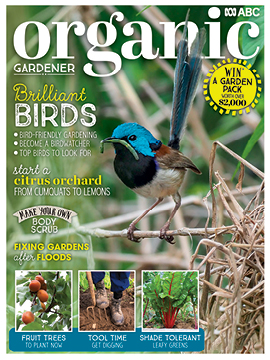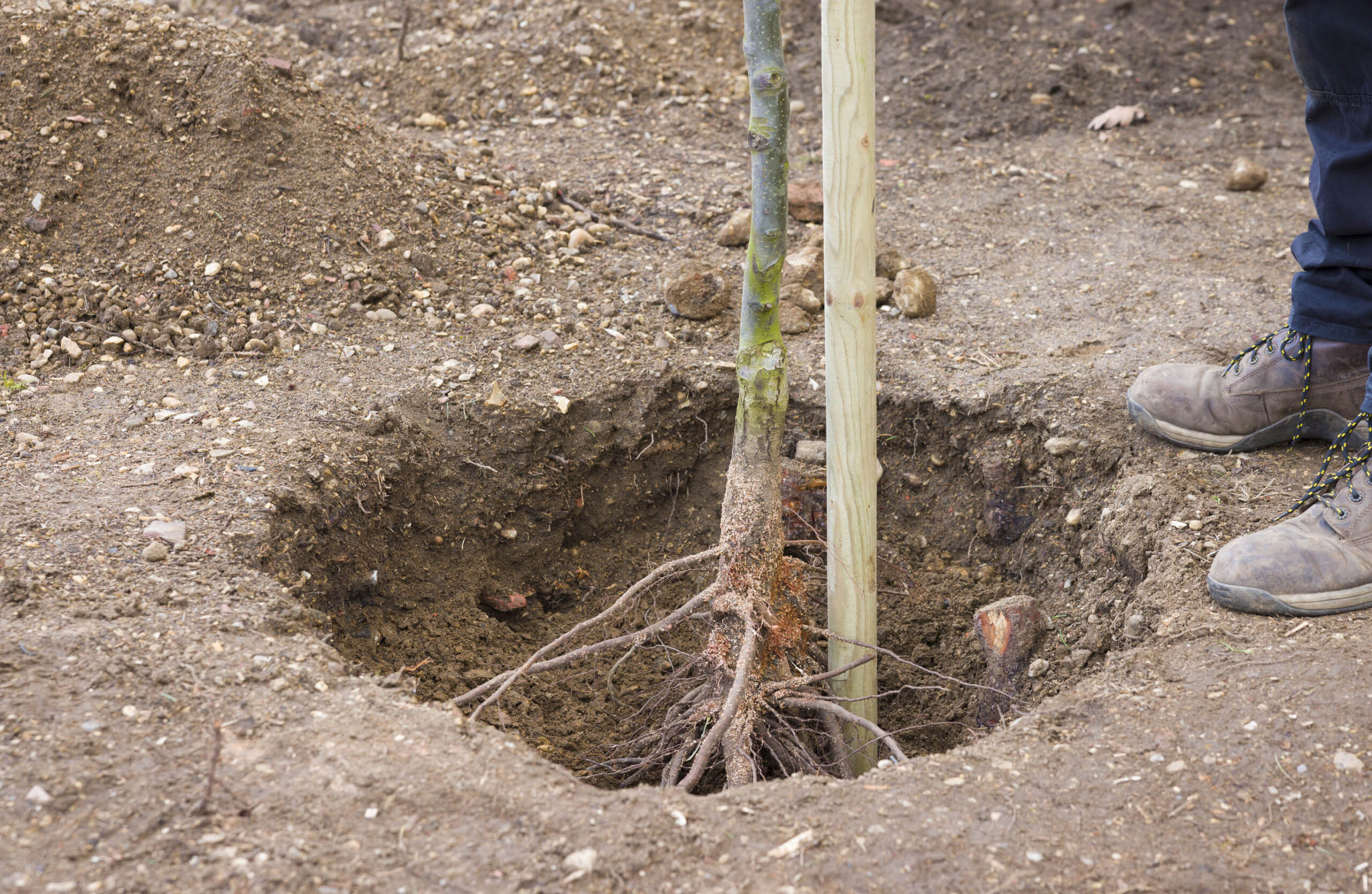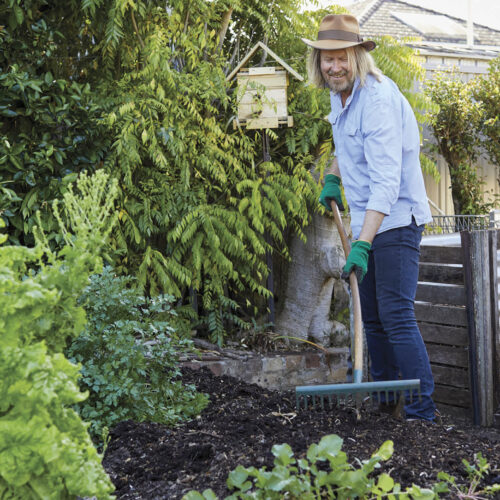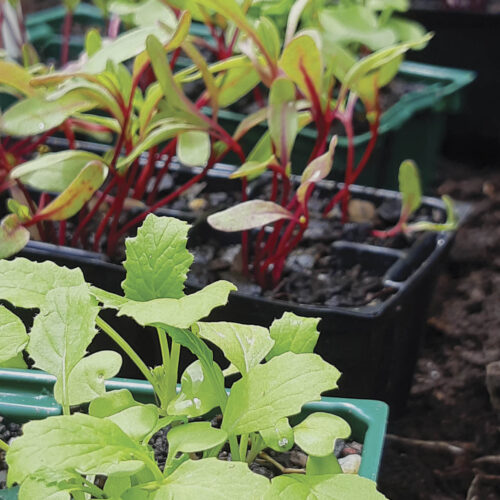Heeling in bare-rooted trees
2022-05-04T03:22:06+10:00
If you have a bunch of bare-rooted trees and can’t plant them quickly, you can do what’s called ‘heeling in’: Penny Woodward explains the process here. Plus, basic tips from Karen Sutherland.
Heeling in
It’s always best to plant your bare-rooted trees as soon as they arrive and after they’ve soaked for a an hour or so in dilute seaweed mix. But if you can’t plant straight away, you can ‘heel-in’ your trees for a few days until you’re ready to plant. Heeling in involves covering the roots with some potting mix or moist coir, or soil in the ground if your soil is well-prepared.
In a large hole, container (like a polystyrene box) or pot, put some potting mix, soil or coir in the base. Lay one of your bare-rooted plants against this base. It can be leaning over to one side if that suits the container. Add some potting mix/soil/coir over the roots of this plant, then add another plant, and so on, so the roots of each plant are covered, including the last one. The larger your trees and their root mass, the bigger the container will need to be. There should be no air pockets which would allow roots to dry out. Water in well. The soil should be moist not wet, and check no roots are left uncovered. These plants can stay like this for a week or so if necessary, but check everyday to ensure they stay moist.
Extra watering and mulching tips
A week after planting water again and if it doesn’t rain, do this weekly for about two moths until the tree is well established.
The different mulches you can use include lucerne, pea straw, sugarcane and wood chip mulches. When using mulched on trees, you always need to be careful to stop the mulch from getting too close to the trunk to stop the tree from getting the fungal disease collar rot. A simple way of dong this is to cut the bottom out of a plastic pot and then cut down on side. Put this around the bottom of the trunk to stop the mulch from getting too close.
Young trees benefit from having mulches that breakdown relatively quickly, adding to the organic matter in the soil. So it’s a good idea to initially use lucerne hay or pea straw, both of which will also add nitrogen. As the tree grows and in the following years you can use wood chip mulches that break down more slowly and last much longer. All mulches help to maintain moisture in the soil which lessens the need for watering. Don’t water if the ground is already wet. Check before you water but remember that watering is particularly important when the fruit starts to grow, the more consistent the water supply, the juicier the fruit.
Planting – the basic steps
From Karen Sutherland’s feature ‘The Bare Essentials’ in OG 133.
1. Prepare the soil as you would if planting potted plants, by digging a hole twice as wide as the root area.
2. Mix the soil you have dug out with some compost and well-rotted (or organic shop-bought) manure.
3. Make a mound of soil in the bottom of the hole to drape the roots over so they can spread and establish quickly.
4. While doing this, look for the soil mark on the trunk (which usually shows the soil level when the tree was in the ground) and ensure it aligns with the new soil surface. Also check the graft point and make sure this is above the soil level.
5. Hold the tree upright in the hole (sometimes easier done by a second person) at the correct level, then gently backfill the hole with the soil and compost mix. Make sure it is loose and friable – avoid any large clods of earth.
6. When the hole is half-filled, gently water in with 5–10 litres of water (half to full bucket) to settle the soil around the roots and remove air pockets. Once this drains away, continue back-filling until the soil is up to the previous soil mark on the tree, then firm the soil around the roots by gently treading with your foot.
7. Finish by watering in.
You will find more tips from Karen Sutherland that will help ensure you enjoy success with your bare-rooting trees in our Early Winter 2022 issue (OG 133) available at newsagents and supermarkets as well as online.







